July Urban Nature Walk: Wasp Watching in Quincy!
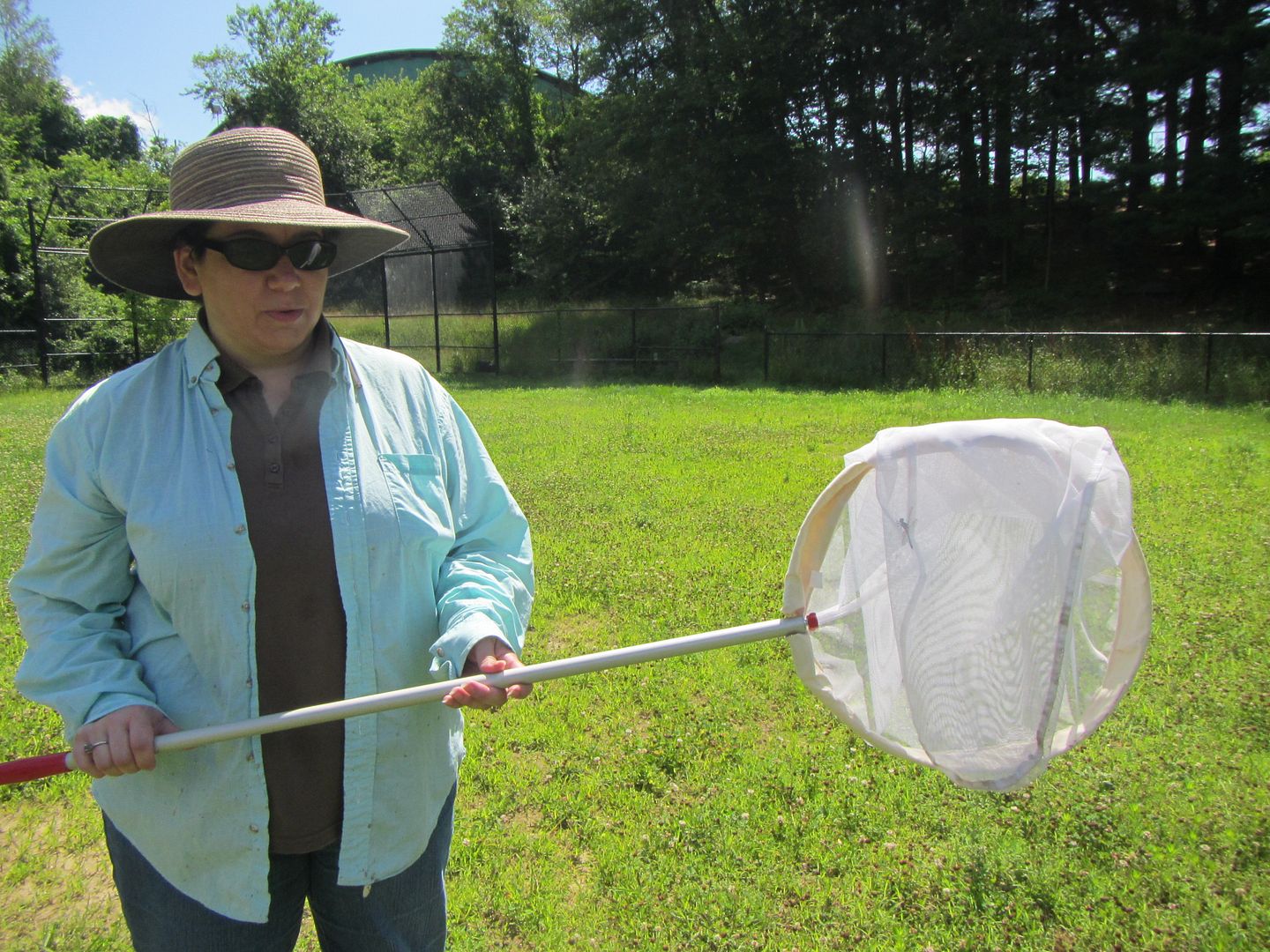
Our July Urban Nature Walk took place in the small city of Quincy, where there was some known habitat of a particular very special species of wasp. My friend Jenn, an invasive species expert with the State Department of Agriculture led a small group of us behind a big indoor skating rink to a barely maintained little league field called Curry Field
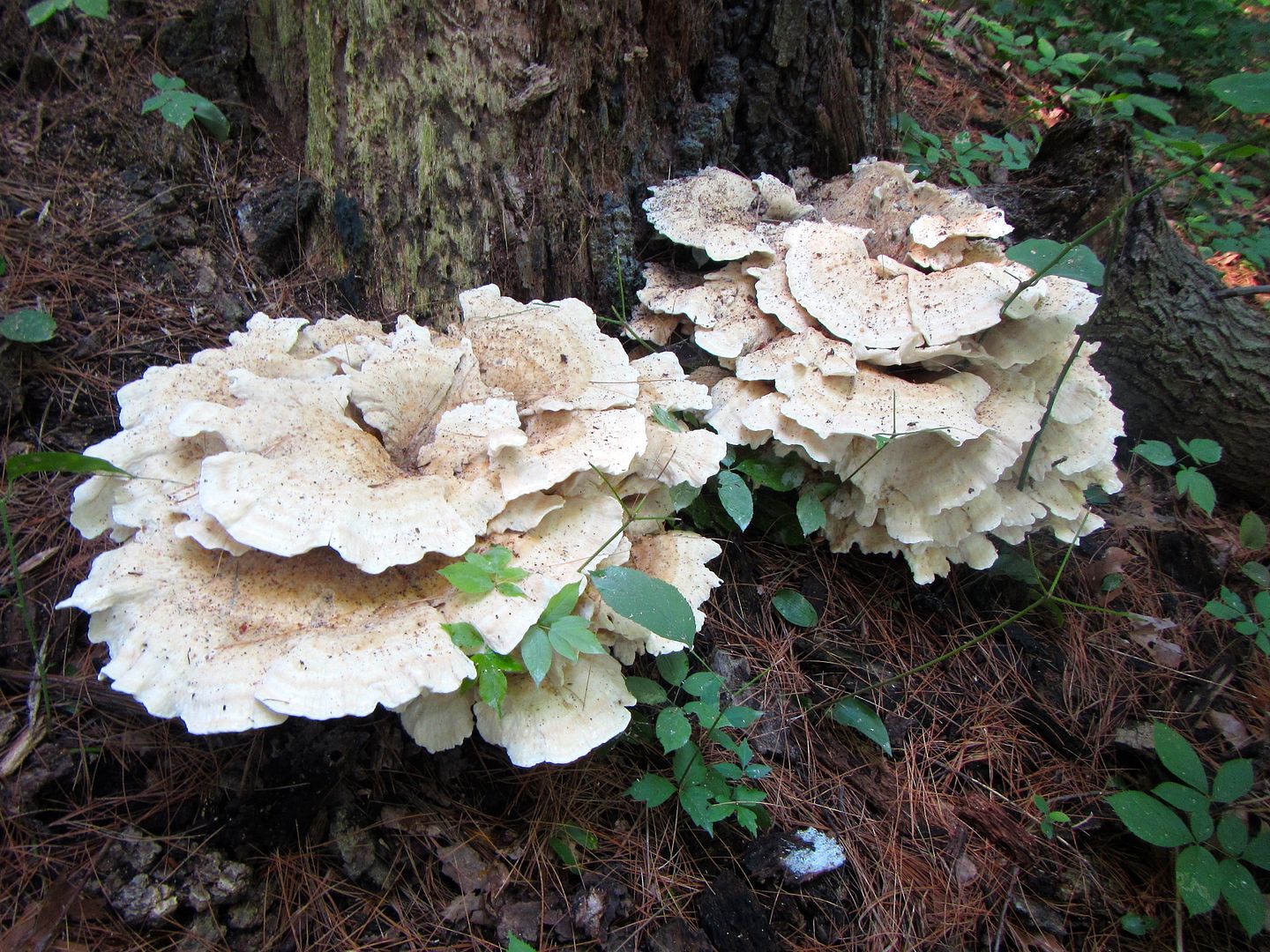
First things first, we found these huge mushrooms in the woods on the way to the field. To be fair, Don found them while looking for ferns and horsetails. These are, actually, rather modest specimens of Bondarzewia berkeleyi
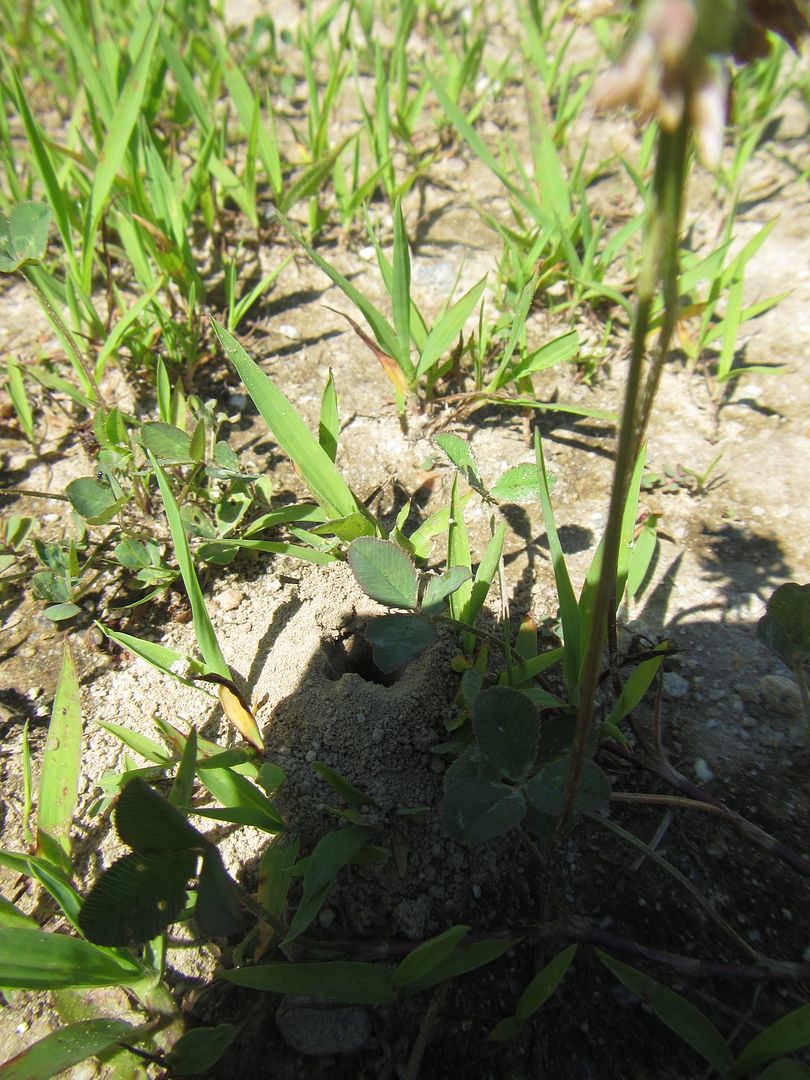
This is what we're really looking for! What is it?
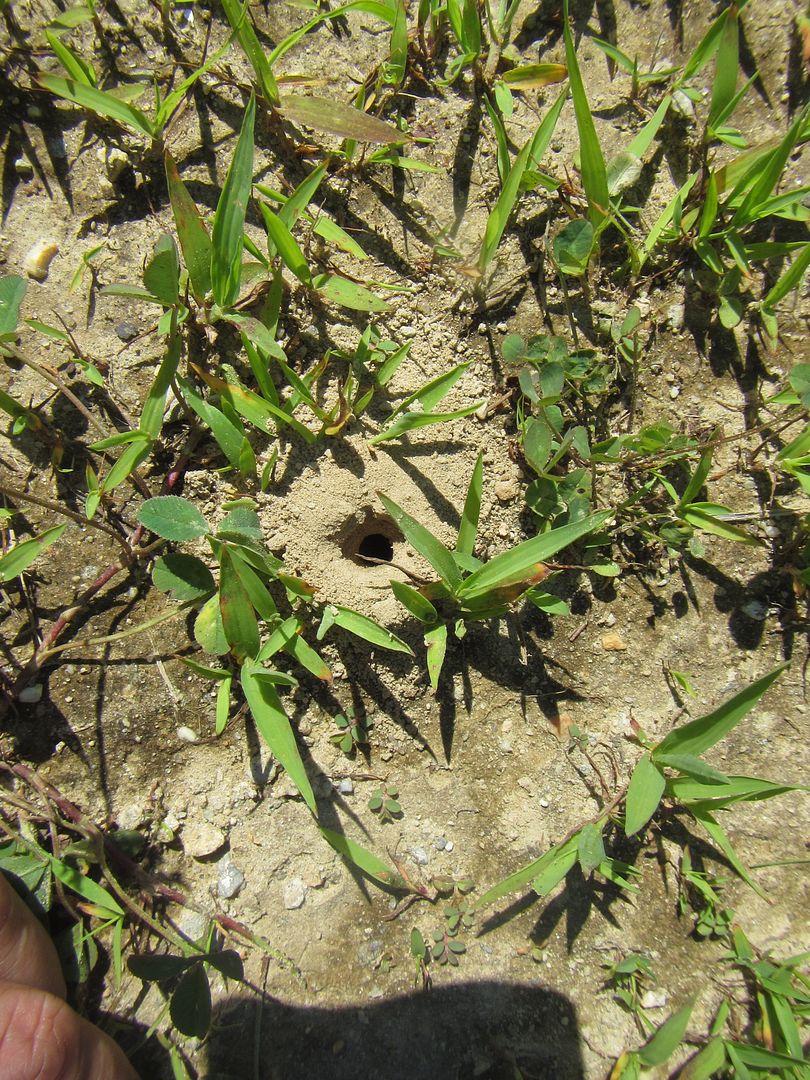
These little mounds are the hallmarks of the wasps we're looking for, Cerceris fumipennis. The female digs out a burrow the diameter of a pencil and deposits her eggs in brood cells down in the earth. Like most wasps she must feed her young other insects. This wasp also goes by the name of "smoky-winged beetle bandit" which tells you what it feeds its larvae (and also translates "fumipennis" into something that 12 year olds won't snicker at).
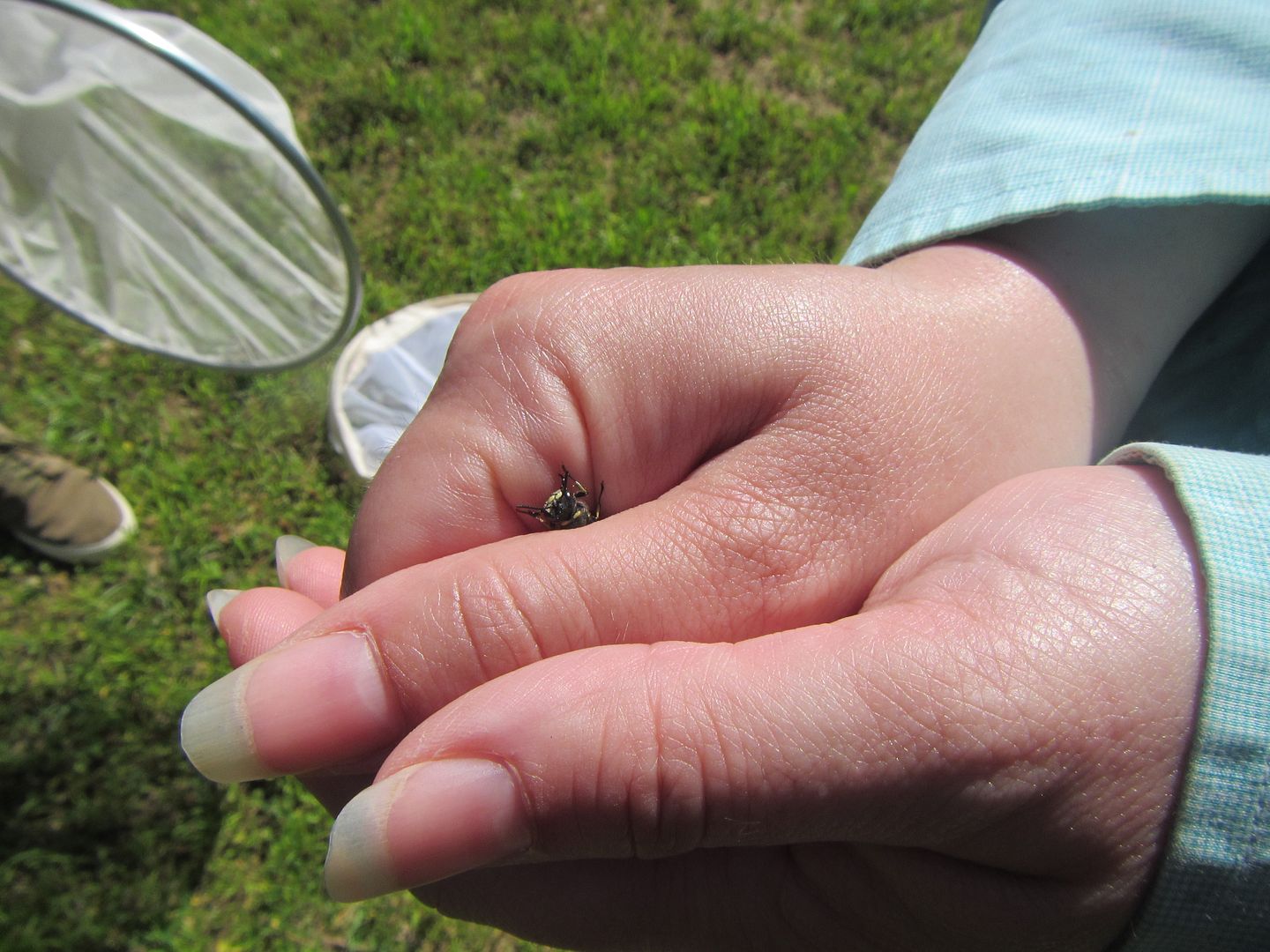
And look here, Jenn has caught herself one! But let me back up. The point of this is that little smoky-wing here specializes on Buprestid beetles, or jewel beetles, including the emerald ash borer. We have plenty of native Buprestids here in the Northeast, and the EAB is an invasive alien. These beetles spend most of their lives as grubs deep in the wood of living trees, and then a short time way up in the canopy of the trees, so most of us never see one. The wasps catch the adults and bring them down to the ground. Sometimes the wasps drop the beetles near their mound and forget about it; these can be easily collected and catalogued. Wasp watchers collect and catalogue, but also catch beetle-laden wasps as they come in for a landing. This deprives the wasp of it's quarry, but provides valuable information. We caught 3 smokies carrying jewel beetles before we decided we had learned enough and were just engaged in wasp-bothering.
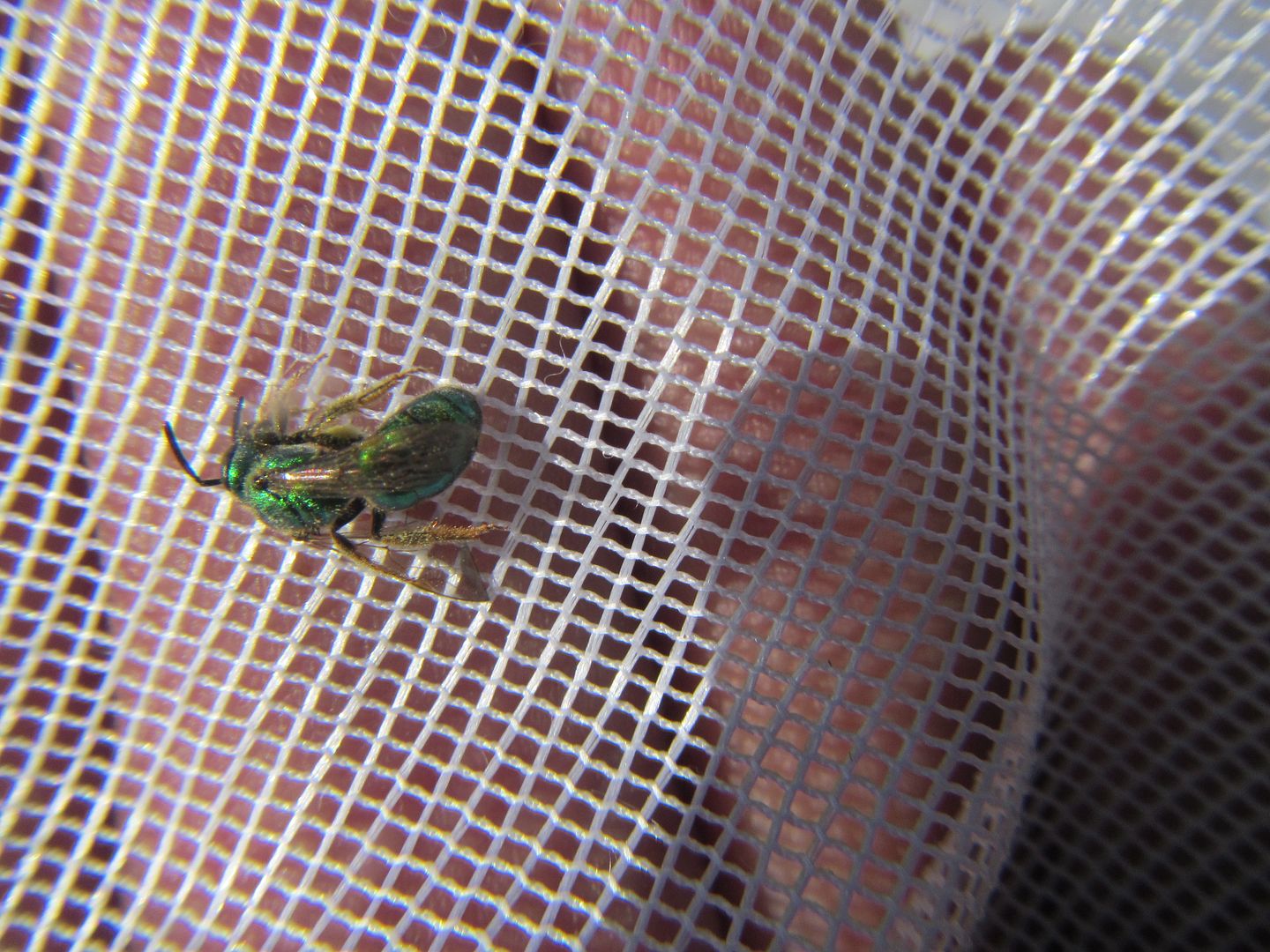
I also caught a couple related wasps that, instead of beetles, use sweat bees to stock their larders. This metallic green sweat bee should have been fed to the wasp grub but now will probably find its way to the local ants or other scavengers.
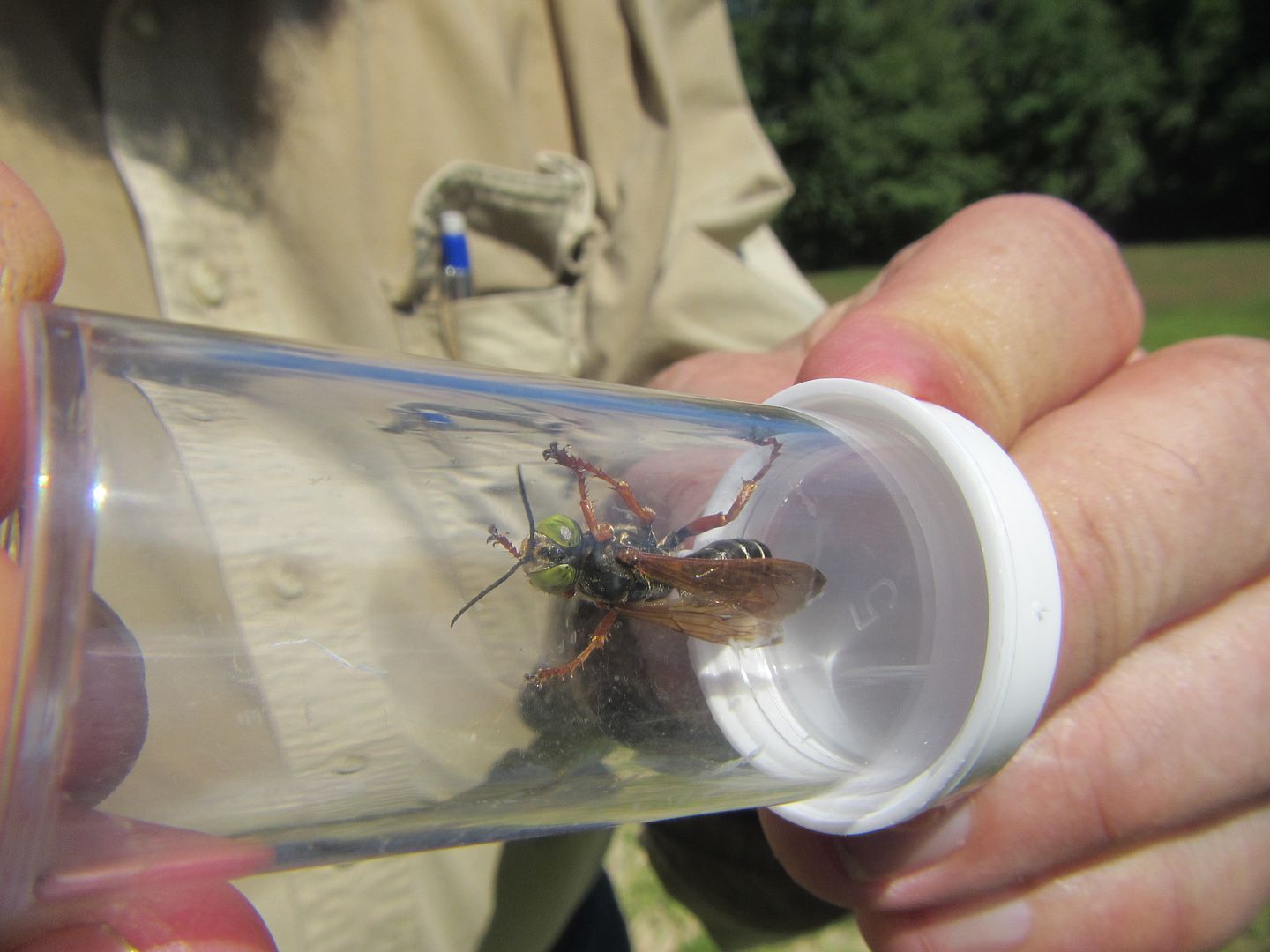
Here she is, a real live smoky-winged beetle bandit!
[EDITED 7/18/13 TO ADD: nope this isn't a smokey-winged bandit it's a "sand-loving wasp," Tachytes sp. I'll have to go on another expedition to get a good photograph of the right wasp.]
Isn't she beautiful? Also they don't seem to be able to sting humans, so you can handle them without worry.
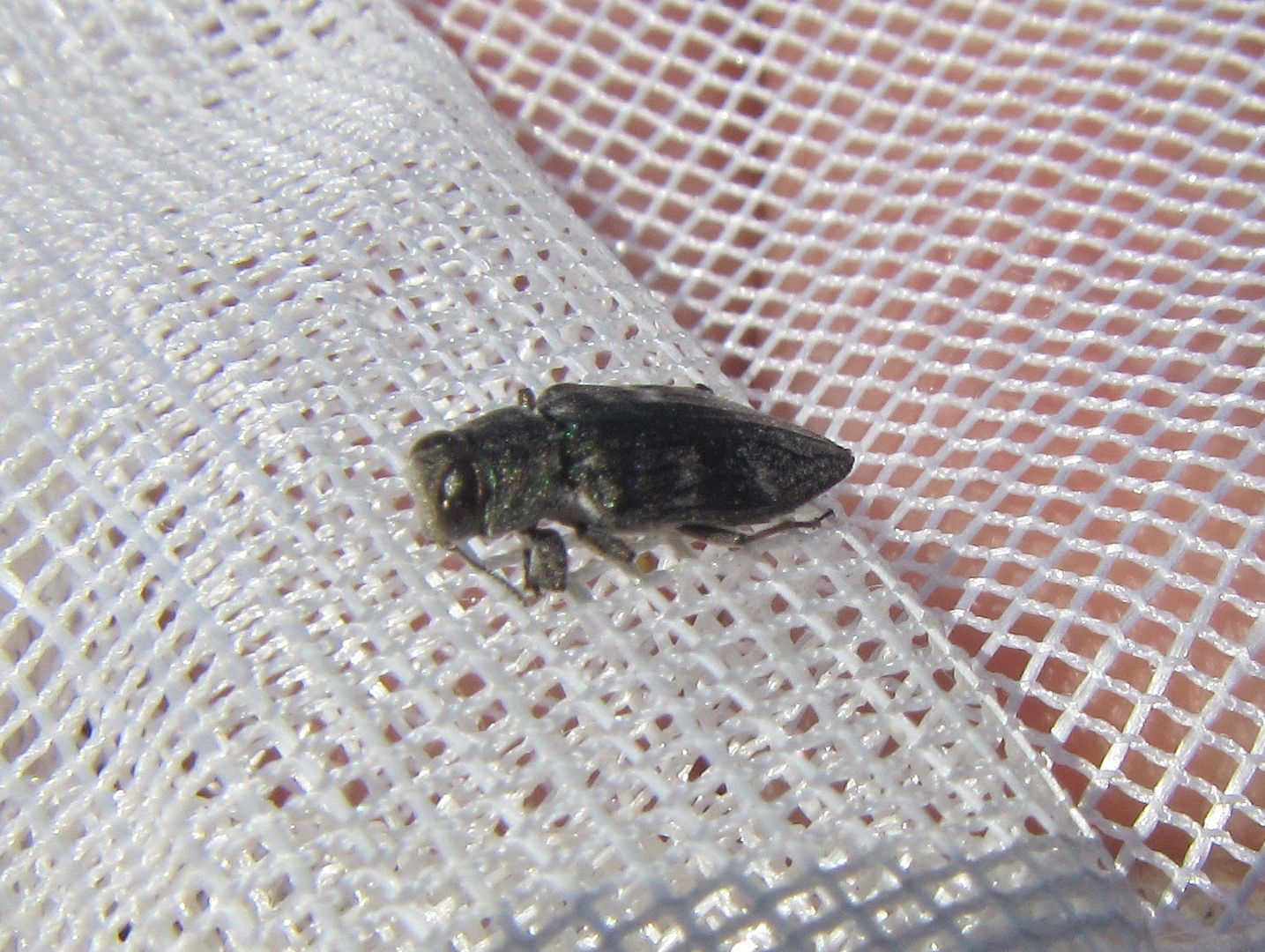
And here's her intended nursery groceries, some native wood-boring jewel beetle.
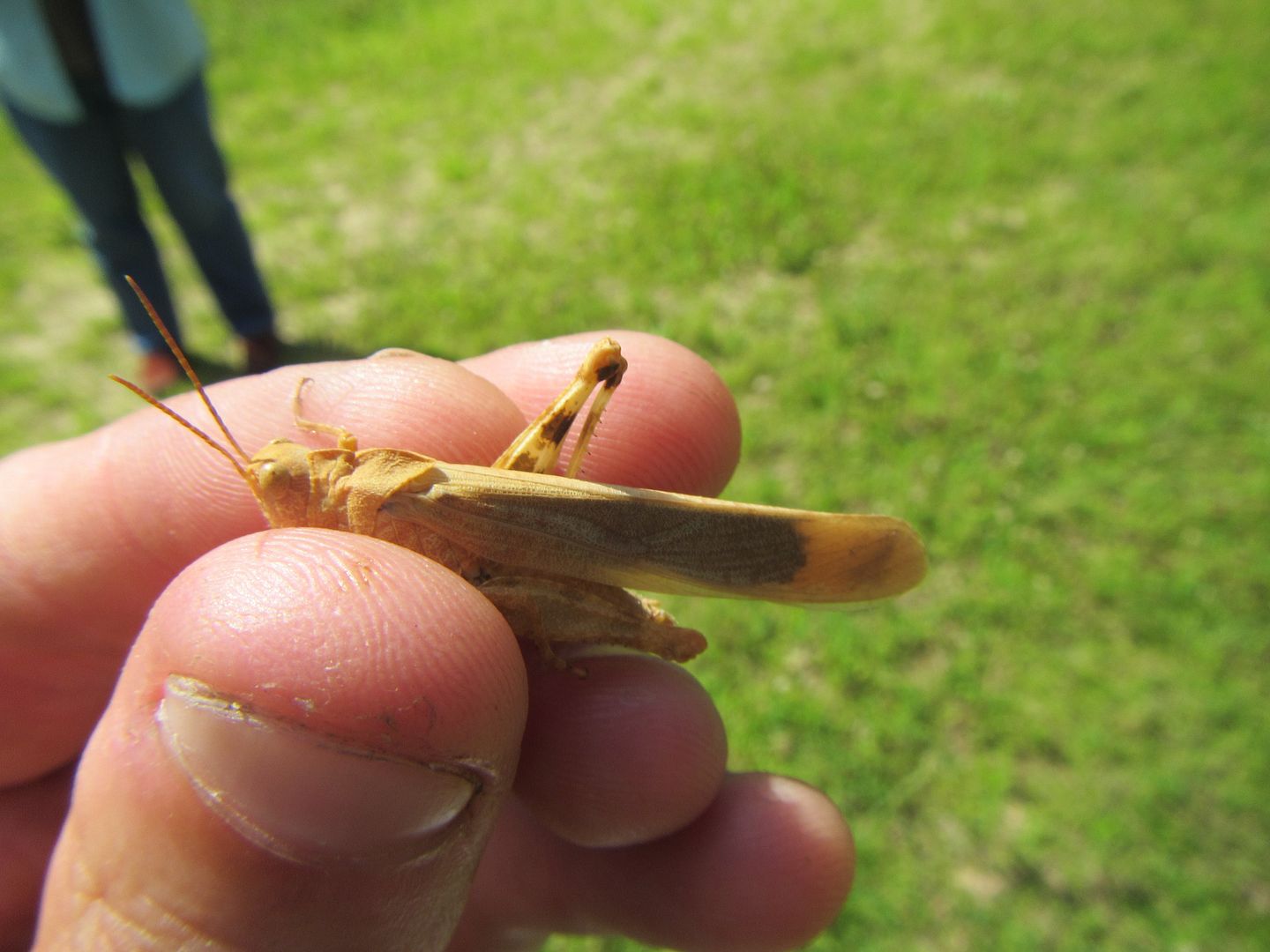
Of course, put me in a grassy field with an insect net and I'm gonna catch more than what I'm supposed to.
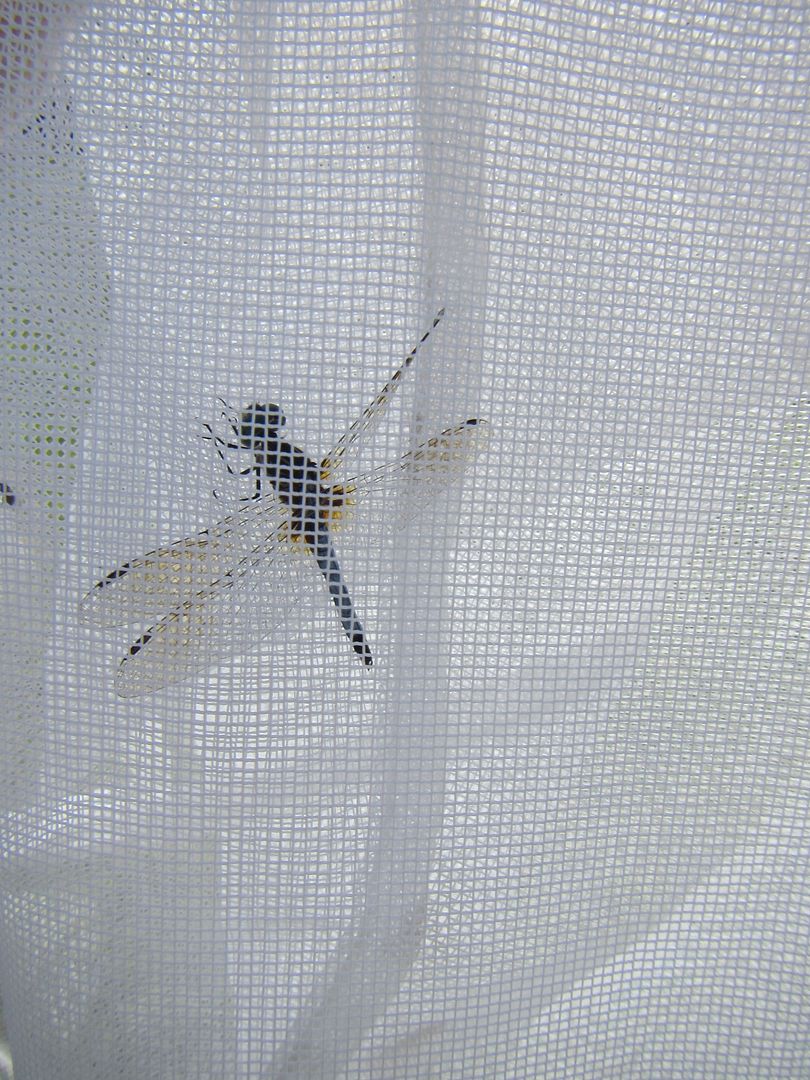

You see, there are a pair of ponds behind the ball field. These are actually old man-made skating ponds.
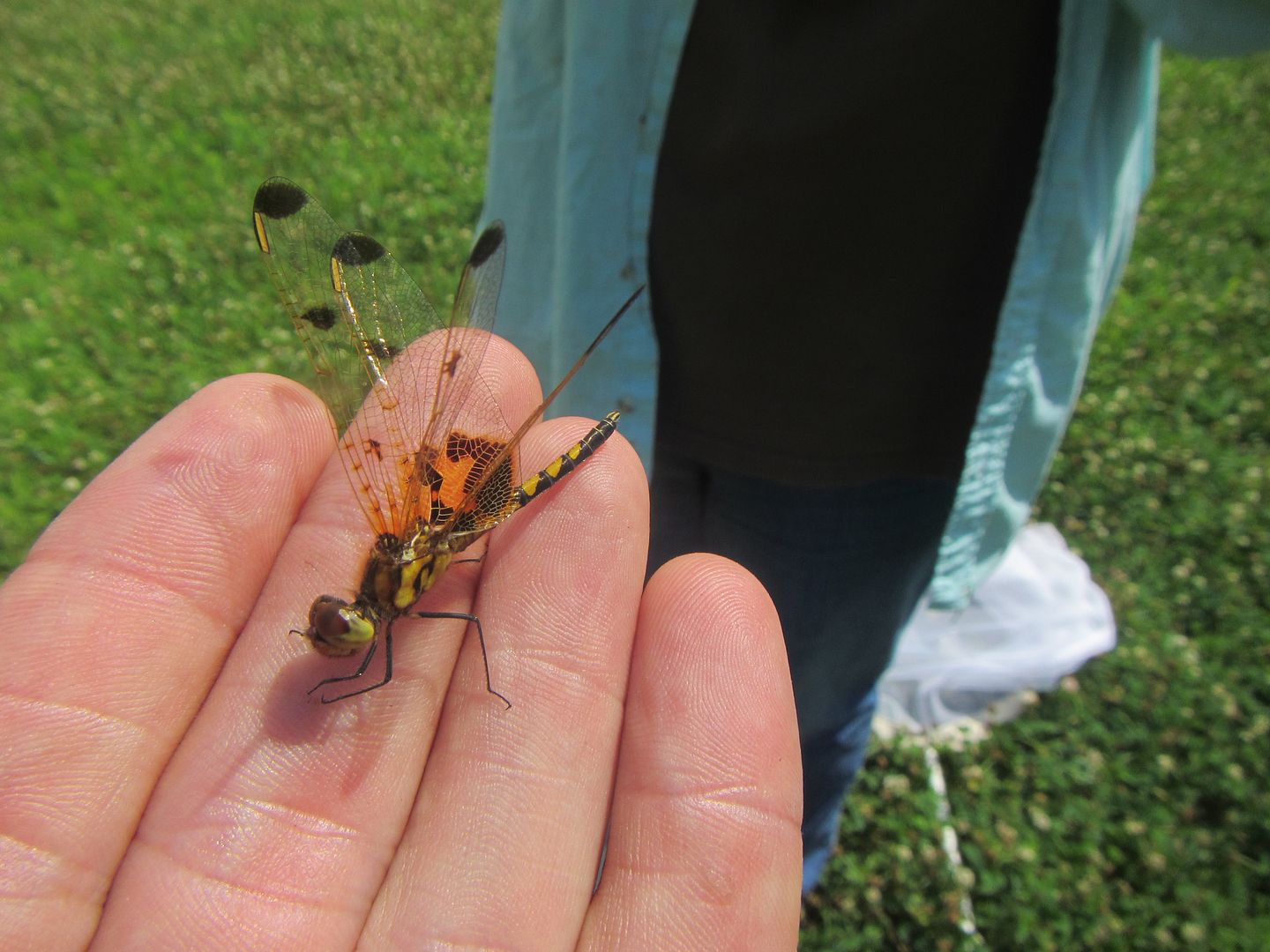
Makes for good dragonfly hunting!
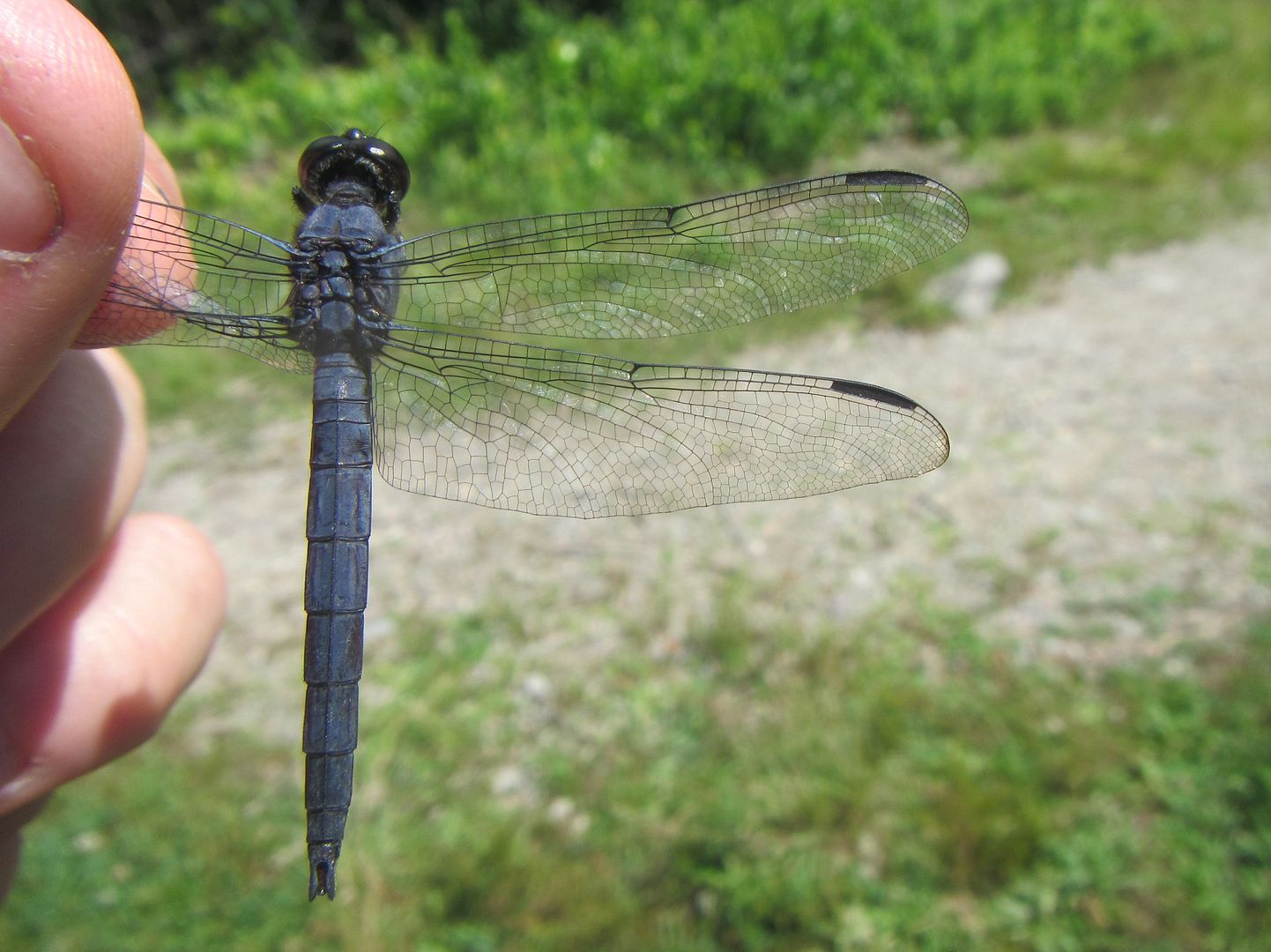
I'm hoping dragonfly experts like cottonmanifesto will jump in to tell me what species we found here.
Jenn posted a pic of me holding a nice spangled skimmer here.
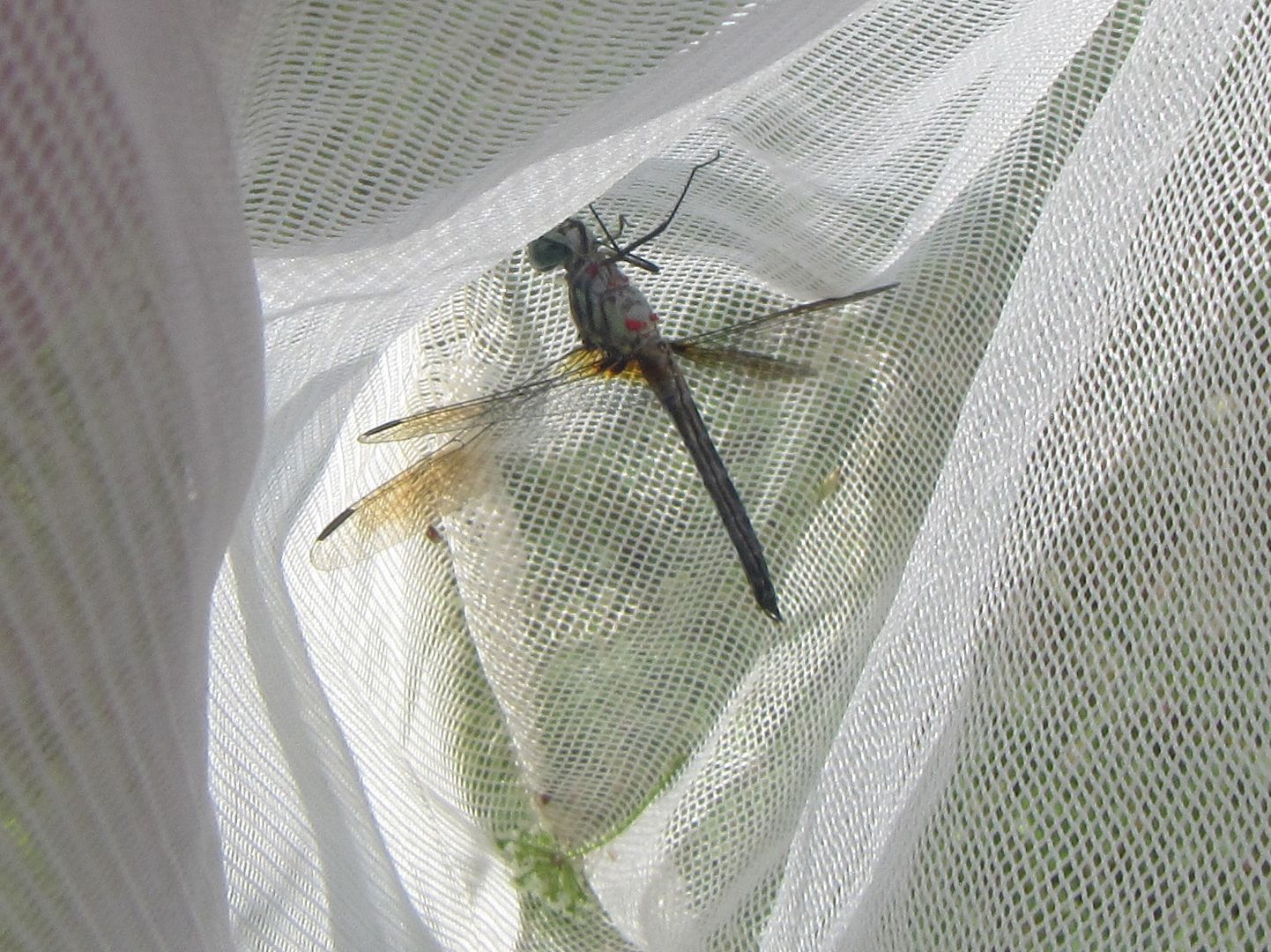
This one has some hitchhikers--see the red markings? Those are mites, just hanging on to catch a flight to somewhere else.
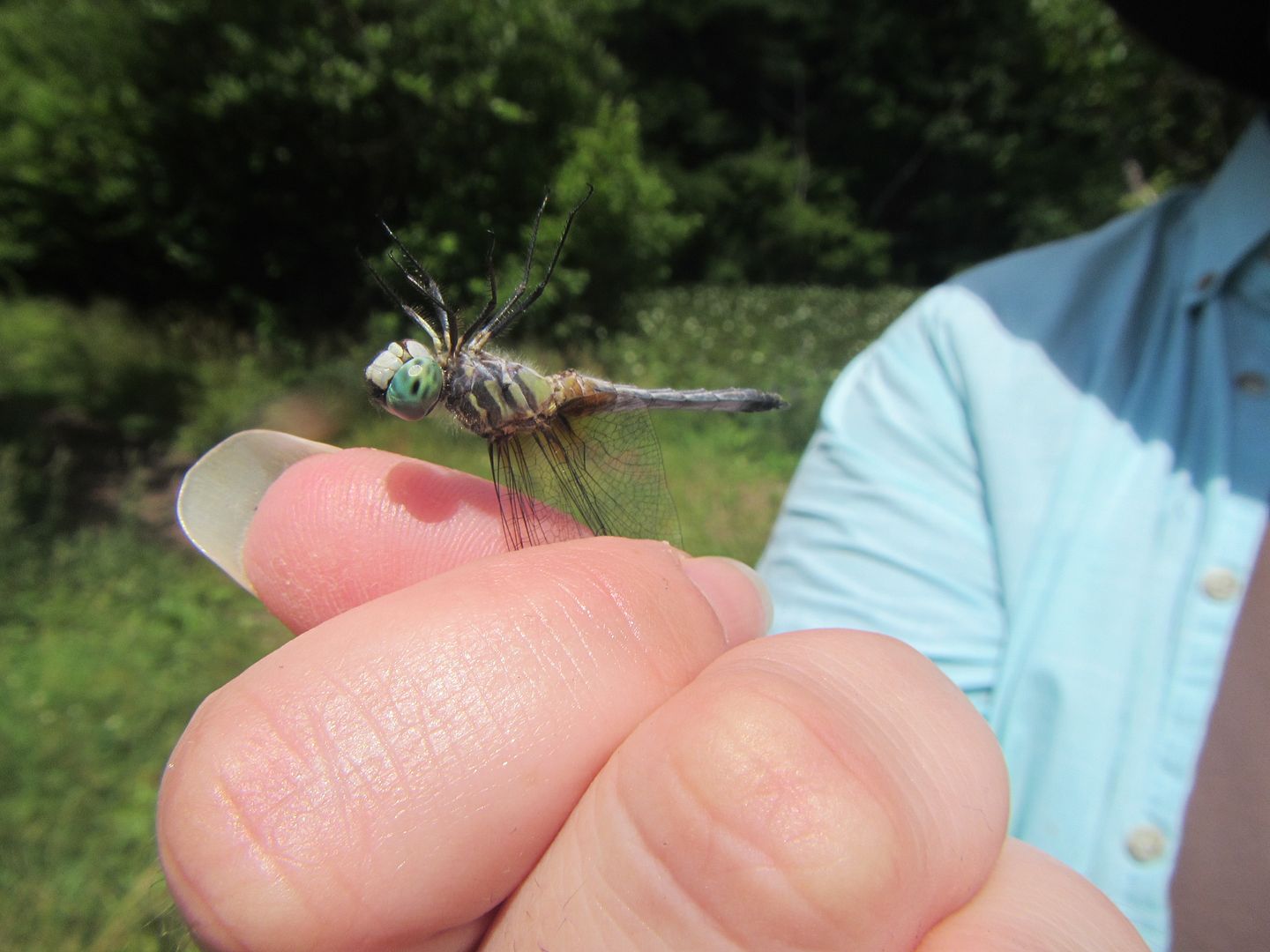
It looks uncomfortable, but holding the wings against each other is the way to handle dragonflies without hurting them.
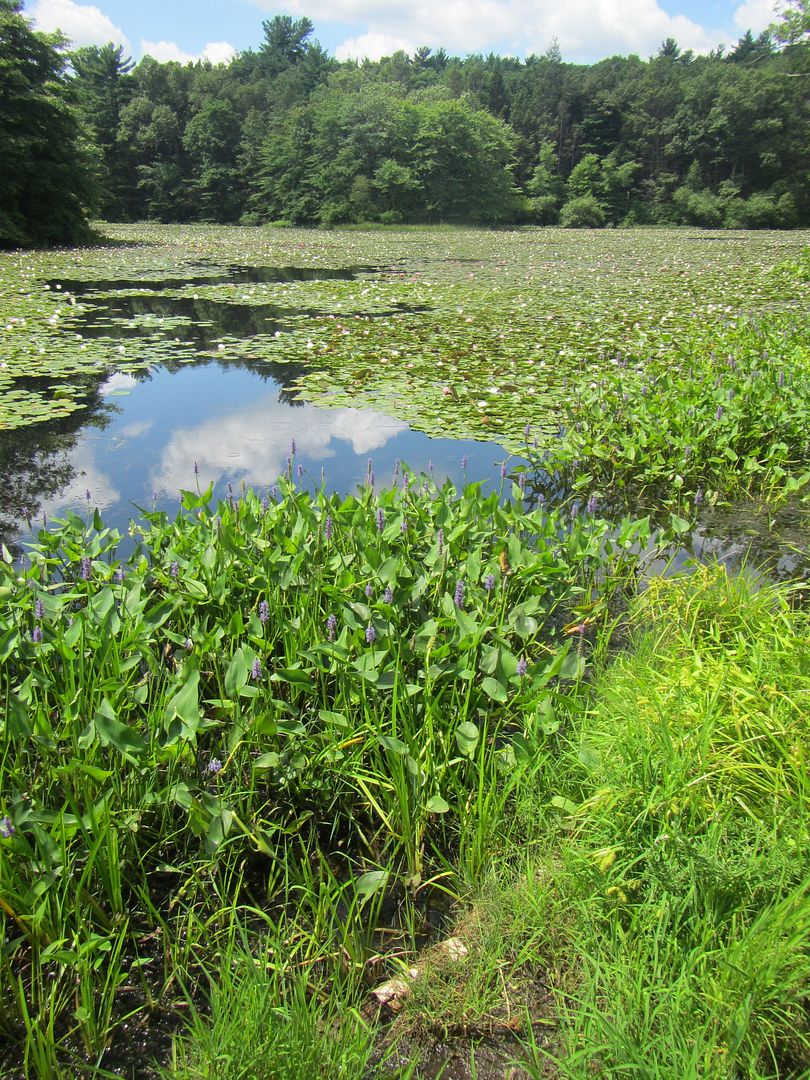
Sometimes man-made habitat doesn't look too bad.